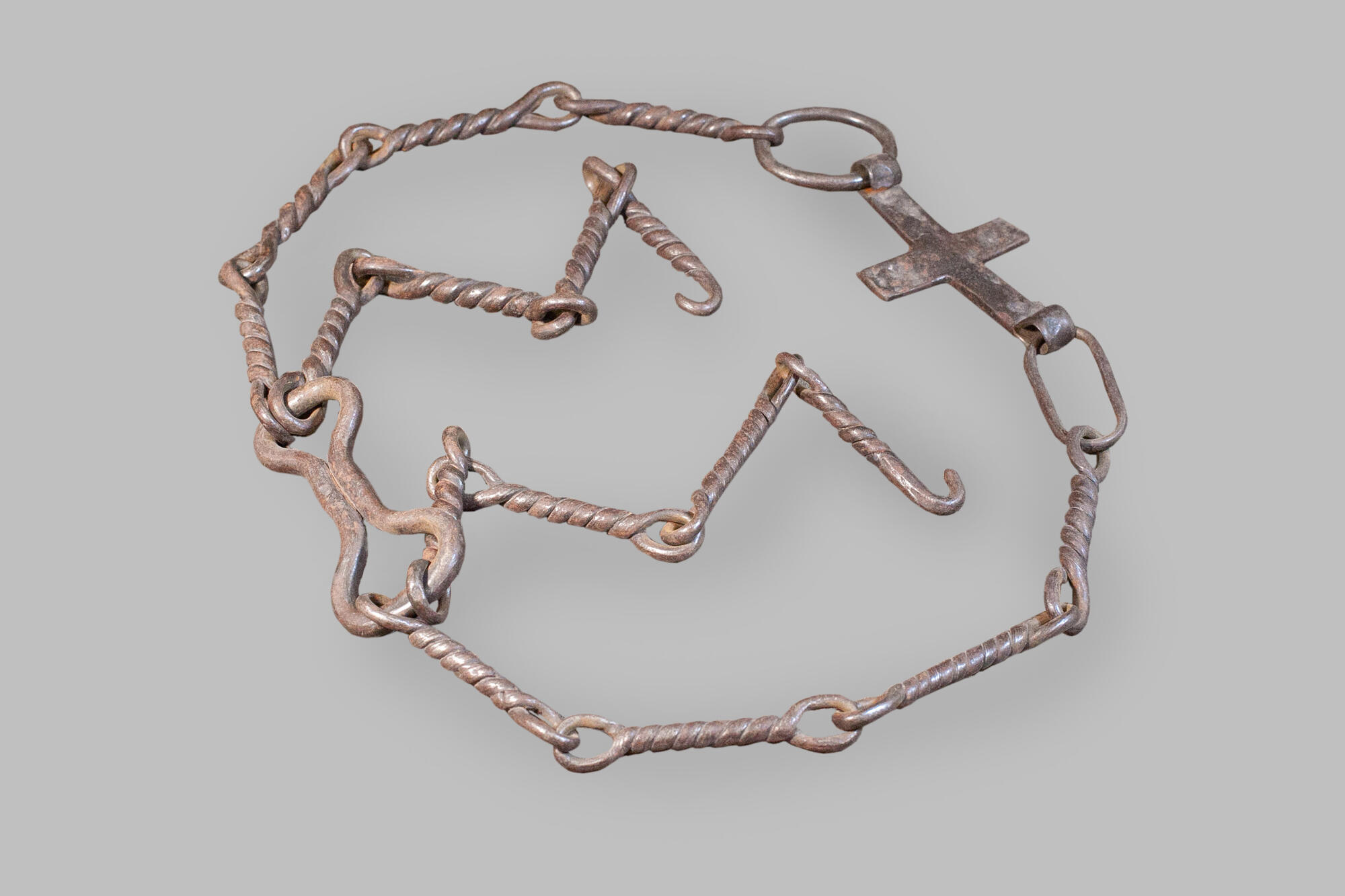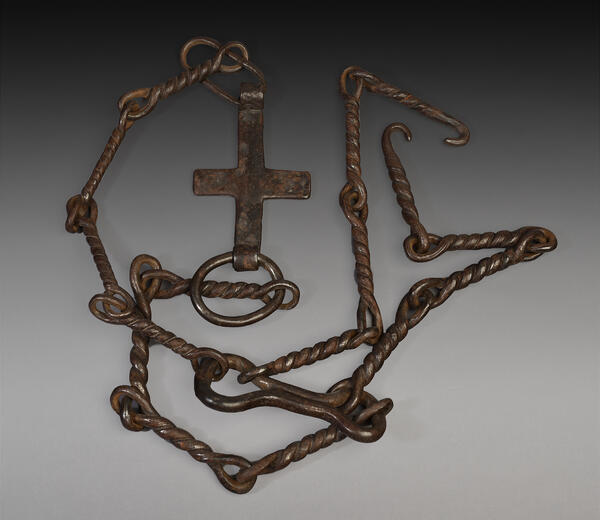The Russian word for chains worn by Christian ascetics — verigi — comes from the Old Slavonic “veriga” — chain. Verigi can refer to various types of iron chains, stripes, and rings that were worn by ascetics on their naked bodies to mortify the flesh. Gregory the Theologian wrote about them,
1 / 2
Monastic chains
Creation period
the 16th century
Place of сreation
Russia
Dimensions
103x17 cm
Technique
iron, forging
Collection
Exhibition
1
Open in app#7
#9
Others torture themselves with iron chains, and, by mortifying the flesh, mortify sin as well.
#10
Tryphon of Vyatka, the Wonderworker, who founded the first monastery in Khlynov (modern Kirov) in 1580, wore such chains to mortify the flesh.
From a young age, Tryphon felt called to lead a monastic life. Always keeping a strict fast and praying ardently, he became a monk and took the monastic vows.
In 1580, Tryphon came to the town of Khlynov, Vyatka Governorate, wishing to build a monastery. Hoping to receive permission to do that, he went to Moscow where he was ordained a hieromonk by Metropolitan Anthony, received a blessing to build a monastery, and a letter signed by Tsar Ivan the Terrible.
Upon his return to Khlynov, the monk started organizing a monastery. As a strict ascetic, he wore sackcloth made of coarse cloth and heavy chains on his body. He strove to enlighten “the lost ones” with the help of the Christian faith. He devoted all his efforts to that cause.
Before his death in 1612, Saint Tryphon wrote the following letter to his brethren,
From a young age, Tryphon felt called to lead a monastic life. Always keeping a strict fast and praying ardently, he became a monk and took the monastic vows.
In 1580, Tryphon came to the town of Khlynov, Vyatka Governorate, wishing to build a monastery. Hoping to receive permission to do that, he went to Moscow where he was ordained a hieromonk by Metropolitan Anthony, received a blessing to build a monastery, and a letter signed by Tsar Ivan the Terrible.
Upon his return to Khlynov, the monk started organizing a monastery. As a strict ascetic, he wore sackcloth made of coarse cloth and heavy chains on his body. He strove to enlighten “the lost ones” with the help of the Christian faith. He devoted all his efforts to that cause.
Before his death in 1612, Saint Tryphon wrote the following letter to his brethren,
#11
The flock of Christ, my dear fathers and brethren! Listen to me, a sinner that I am. Although I am rude and worse than anyone else, God and His Most Holy Mother have allowed me, bad as I am, to manage His house. I beg you, for God and His Most Holy Mother, treat each other with agape love. Without such love, no virtue is complete before God.
Christ said to his disciples, ‘Love one another.’ Or, as Apostle Paul put it, ‘Carry each other’s burdens.’ Do not condemn one another before God, whether in church or in a cell, alone or among the brethren. Pray in your cells with fear. And by no means should you ever skip church singing: even if there is something to do, run to the church of God and sing. First, give God what is His and then do other things.
Christ said to his disciples, ‘Love one another.’ Or, as Apostle Paul put it, ‘Carry each other’s burdens.’ Do not condemn one another before God, whether in church or in a cell, alone or among the brethren. Pray in your cells with fear. And by no means should you ever skip church singing: even if there is something to do, run to the church of God and sing. First, give God what is His and then do other things.
#12
Tryphon was buried in the Vyatka monastery that he had founded. Subsequently, he was canonized as a saint.
#13
Ministry of Culture of the Russian Federation
read morehide
00:00
00:00
1x
Monastic chains
Creation period
the 16th century
Place of сreation
Russia
Dimensions
103x17 cm
Technique
iron, forging
Collection
Exhibition
1
Open in app
Share




